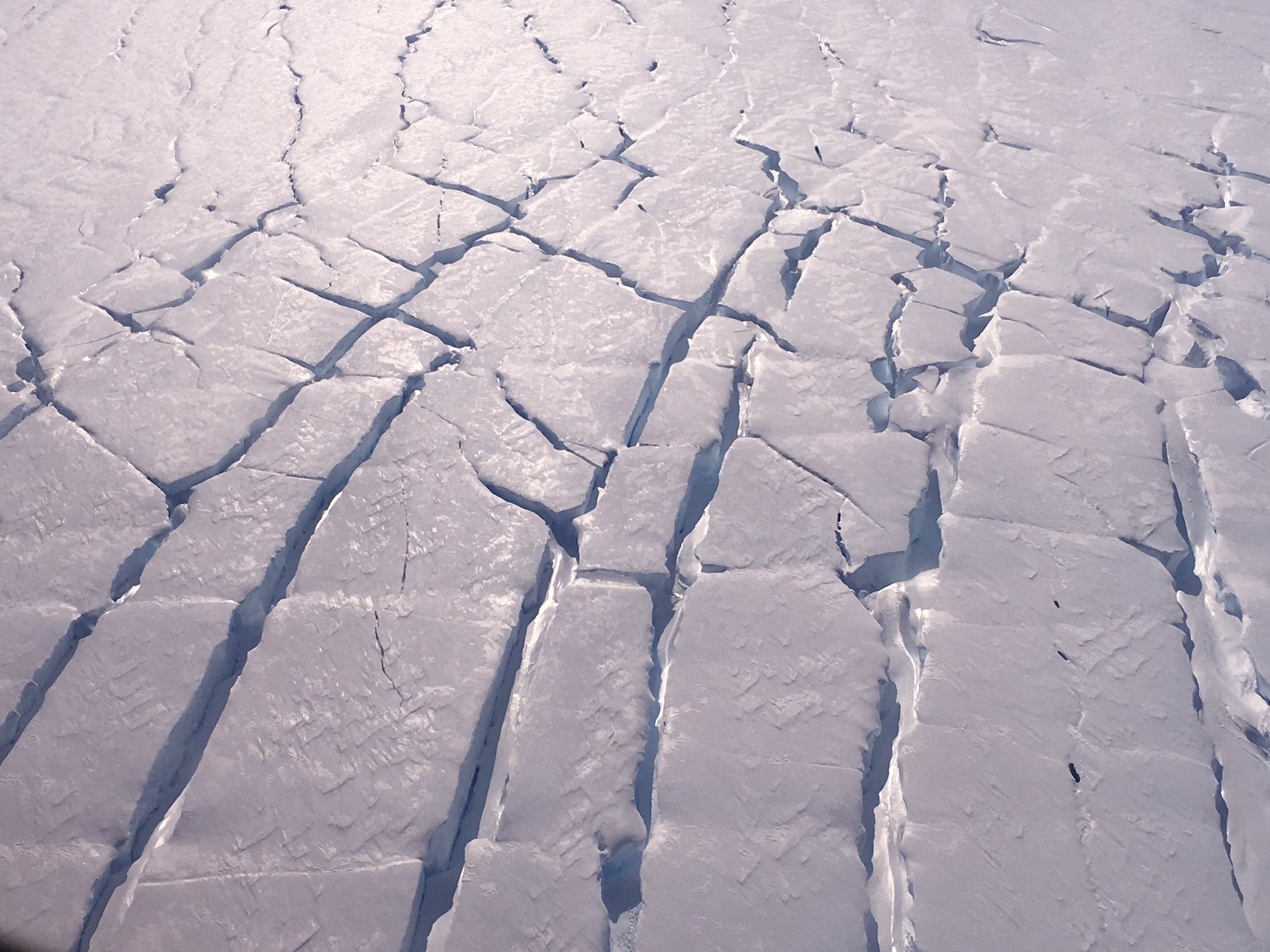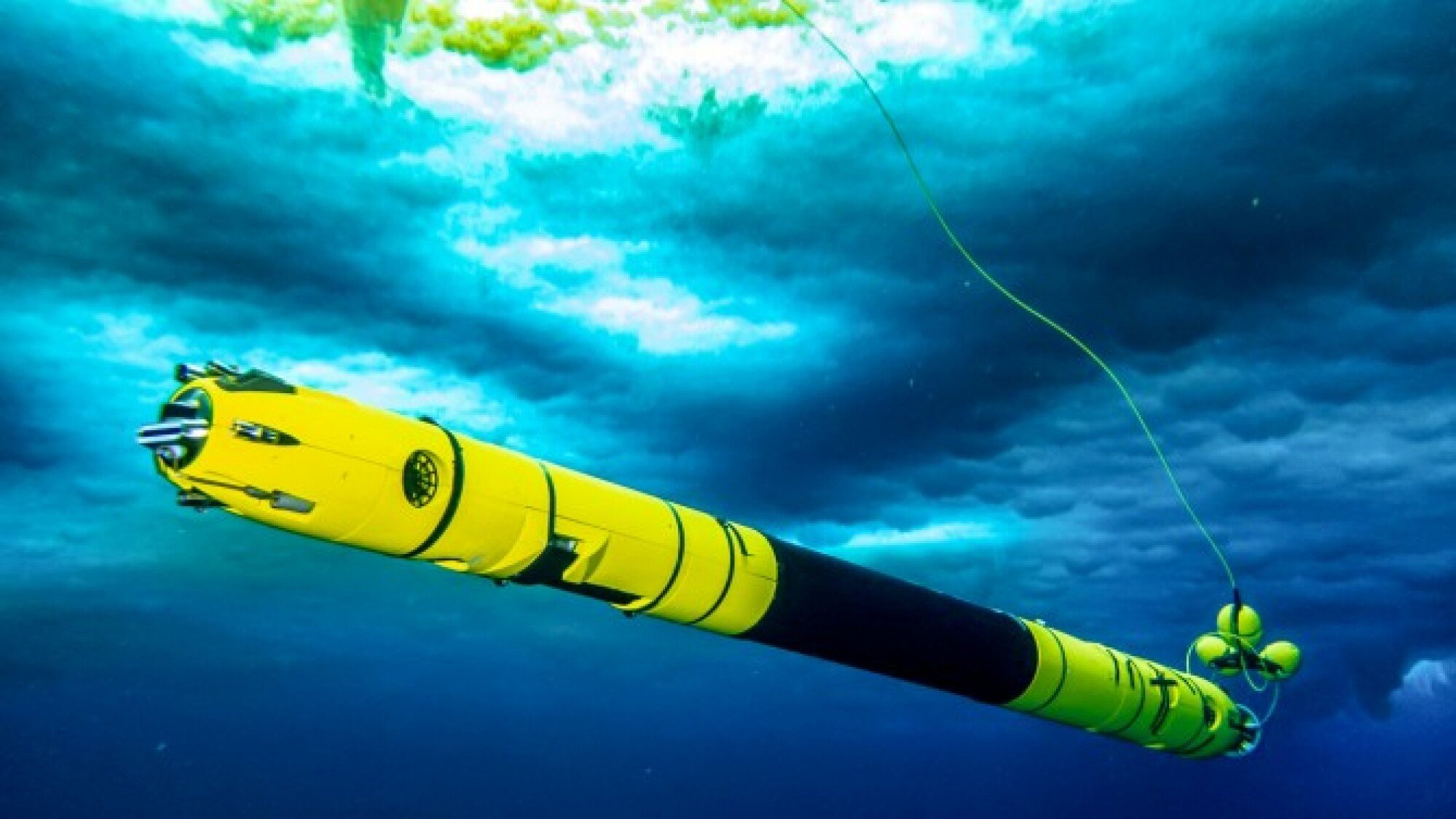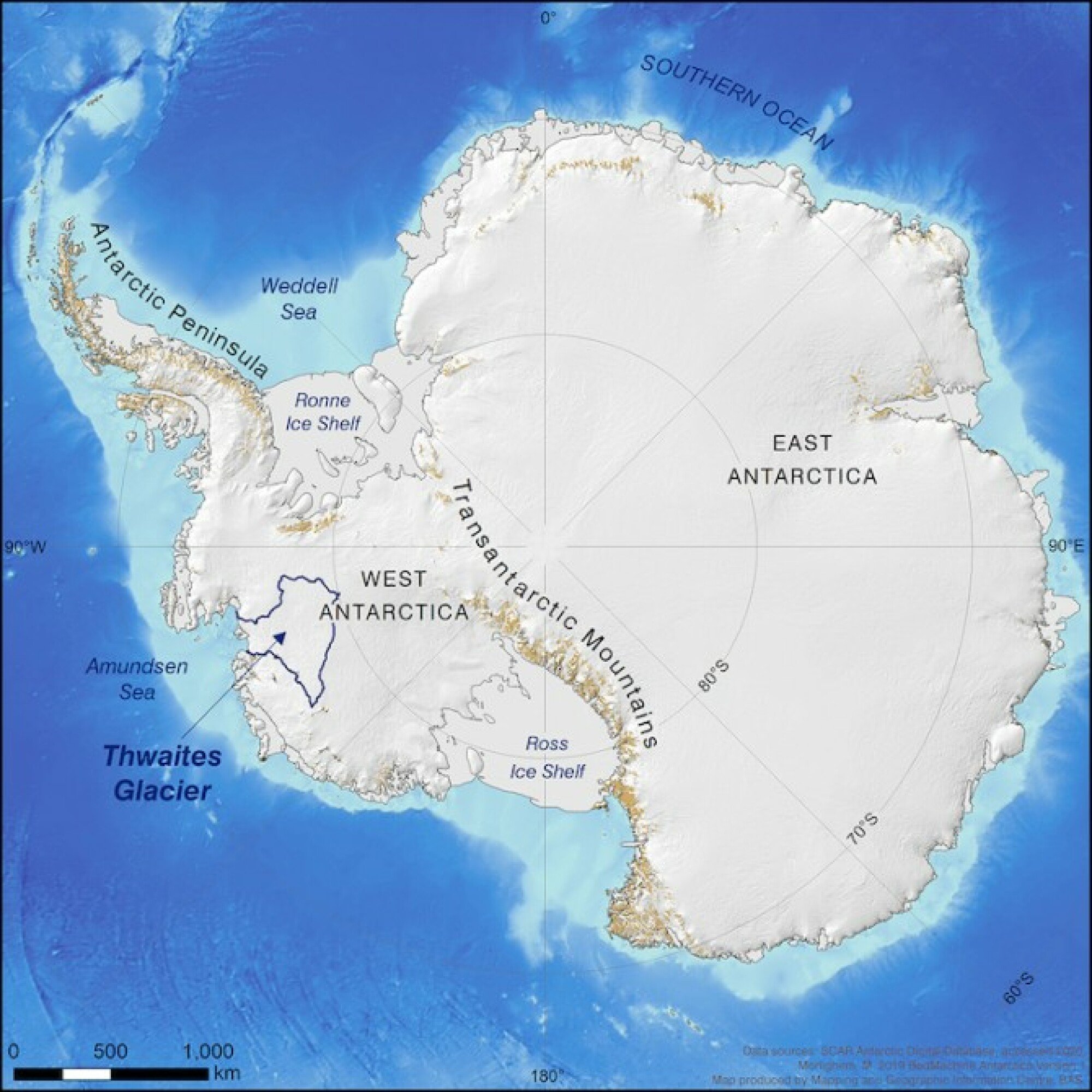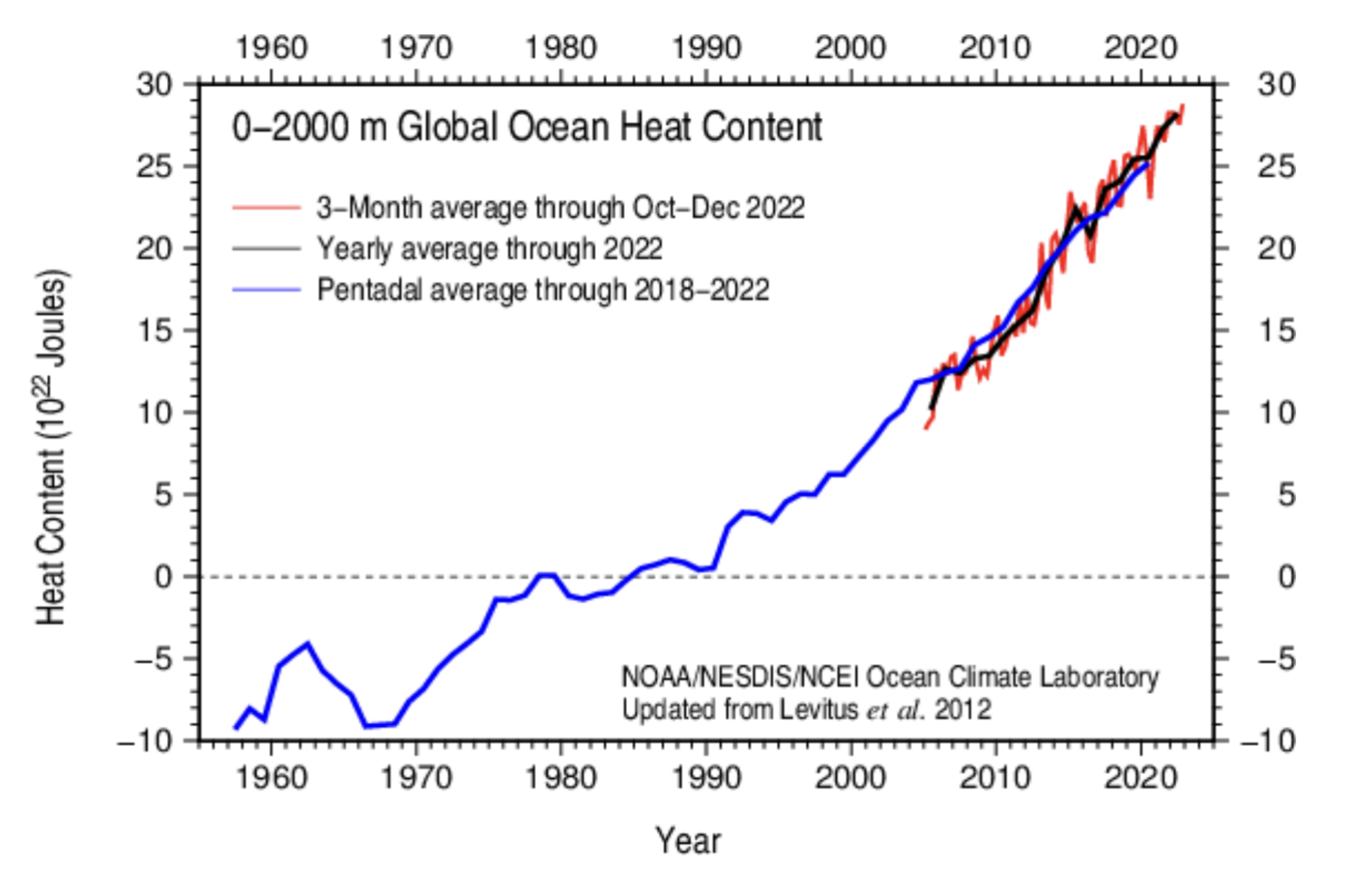
The Thwaites Glacier, an ice formation the size of Florida, can change the world. And the latest research shows that some of its most vulnerable spots are in greater danger than previously thought.
Thwaites holds a colossal amount of ice, enough to gradually raise sea levels by over two feet, though its collapse in a heating climate could unleash many more feet from neighboring glaciers. The Antarctic glacier has destabilized, retreating back nearly nine miles since the 1990s. If much of it progressively melts in the coming decades and centuries, large swathes of coastal cities and populated areas around the globe could become submerged, and easily thrashed by storms. For this reason, scientists are now intensely researching where Thwaites is melting, and how fast it might melt. These are monumental questions for Earth’s future denizens.
Take it from researchers who traverse the continent’s callous ice plains to document Thwaites’ rapid changes.
“Thwaites is the one spot in Antarctica that has the potential to dump an enormous amount of water into the ocean over the next decades,” Sridhar Anandakrishnan, a professor of glaciology at Penn State University, told Mashable in 2021.
That’s why, for better or worse, Thwaites has earned the moniker “Doomsday Glacier.” But, crucially, civilization is not inherently doomed, climate scientists emphasize. We are not hapless; we have energy choices that can limit the worst consequences of climate change.
The latest 2023 research, straight from the West Antarctic source, further shows how the glacier is melting. The critical point is beneath Thwaites’ ice shelf, which is the end of the glacier that reaches over the ocean. Crucially, ice shelves ground themselves to the ocean floor, acting somewhat like “a cork in a bottle” to hold back the rest of colossal glaciers from flowing unimpeded into the sea. So if the ice shelf eventually goes, so can the glacier (though this process progresses from over many decades to centuries).
Glaciologists drilled through nearly 2,000 feet of Thwaites’ ice shelf to lower down a yellow, miniature submarine-like robot called Icefin, into the dark water, allowing them to view what’s happening at this vulnerable grounding region. The recent research, just published in the science journal Nature, shows two main findings:
-
The glacier continues to melt underwater, but along the flat expanses that make up a majority of this ice shelf, this thinning is occurring more slowly (some six to 16 feet, or two to five meters, per year) than researchers expected.
-
Yet, Thwaites is melting faster than expected in cracks beneath the critical floating ice shelf. Scientists suspect relatively warmer water is seeping into the natural cracks and crevasses, which amplifies melting at these weaker points (shown in the footage below).
“Thwaites is the one spot in Antarctica that has the potential to dump an enormous amount of water into the ocean over the next decades.”
While glaciologists are still revealing the complicated underwater melting mechanisms, the bigger picture is clear. The glacier is losing ice; and just small amounts of ice loss in this critical grounding zone may result in major overall ice loss.
“Our results are a surprise but the glacier is still in trouble,” Peter Davis, an oceanographer with the British Antarctic Survey who took some of the recent measurements at Thwaites, said in a statement. “If an ice shelf and a glacier are in balance, the ice coming off the continent will match the amount of ice being lost through melting and iceberg calving. What we have found is that despite small amounts of melting there is still rapid glacier retreat, so it seems that it doesn’t take a lot to push the glacier out of balance.”

Credit: Schmidt / Cornell / Icefin
What scientists saw beneath the Doomsday Glacier
On the recent excursion to West Antarctica, researchers camped on the remote Thwaites ice shelf and dropped the robot Icefin down into the water beneath. The rare imagery shown in the British Antarctic Survey video below reveals what’s happening to the thinning ice. Melting in cracks has left “staircase-like” formations on the Doomsday Glacier’s underside.
“Warm water is getting into the cracks, helping wear down the glacier at its weakest points,” Britney Schmidt, an associate professor of astronomy and earth and atmospheric sciences at Cornell University who worked on the new Thwaites’ research, said in a statement.
The Icefin footage is invaluable, because there’s currently no other way to access this almost unreachable zone in one of the most remote places on Earth. And the new footage underscores an important point: researchers don’t yet fully grasp the melting processes underneath one of the world’s largest, and most momentous, glaciers.
“It’s showing us that this system is very complex and requires a rethinking of how the ocean is melting the ice, especially in a location like Thwaites,” Davis said.

Credit: British Antarctic Survey
How much sea level rise is expected?
Already, sea levels globally have risen by some eight to nine inches since the late 1800s. But considerably more is in store.
-
Today, Thwaites’ melting contributes four percent to the ocean’s sea level rise. In the coming decades and centuries, however, that number may shoot up if the glacier becomes detached from the ocean floor and “the cork pops off the bottle,” so to speak. Ice could flow unimpeded into the sea, eventually resulting in feet of sea level rise.
-
Sea level rise is accelerating, driven by the melting of ice and the thermal expansion of the oceans. Seas are currently rising by about one-eighth of an inch each year. Between now and 2050, the National Oceanic and Atmospheric Administration (NOAA) expects sea levels around the U.S. to rise by around another foot.
-
By the end of the century, climate scientists estimate global sea levels overall will rise by some 1.5 to 2.5 feet, and continue rising. How much is largely dependent on how colossal glaciers like Thwaites and nearby Pine Island respond to warming conditions, and warming waters.

Credit: NOAA
Importantly, the effects of warming on ice masses like Greenland and Antarctica hinge largely on the most unpredictable part of the climate change equation: humans. Driven by prodigious fossil fuel burning, heat-trapping carbon dioxide in the atmosphere has skyrocketed in the last century. CO2 levels are now the highest they’ve been in over 3 million years. How high will they go?
